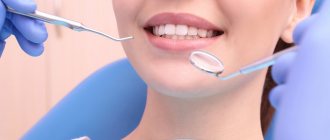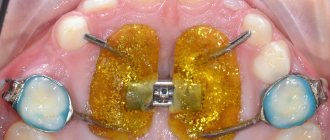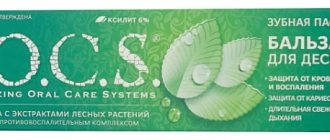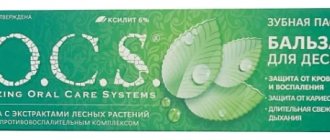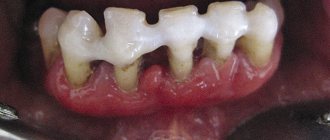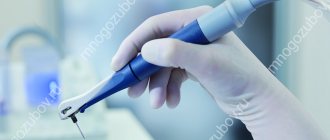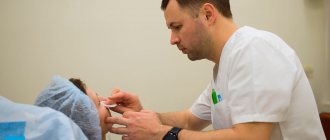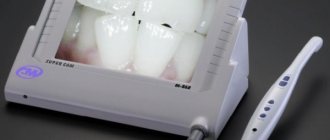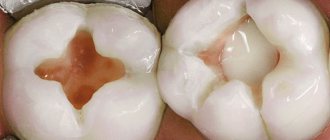From this article you will learn:
- treatment of gums with the Vector device – reviews from a practicing periodontist,
- Vector device for the treatment of periodontitis – price for 1 tooth for 2022.
The article was written by a practicing periodontist.
The Vector device in dentistry is an ultrasonic device for removing dental plaque in dental practice. There are 2 modifications of this device, of which we are interested in the “Vector Paro”, because It is precisely this that is positioned by the manufacturer as an innovative remedy in the treatment of periodontitis. The second device is the “Vector Scaler”, which is no different from conventional ultrasonic scalers used to remove hard dental plaque.
This equipment is manufactured (Germany). In this article we will examine in detail whether the removal of subgingival dental plaque with the Vector device is really so effective. We will also present clinical studies comparing the effectiveness of therapy using the Vector device with the effectiveness of traditional ultrasonic scalers.
What does the Vector Paro device look like?
In the last few years, it has also released a new device called “Vector Paro Pro”. This device combines both “Vector Paro” and “Vector Scaler” in one housing. The latter is even very necessary, because to remove massive supra- and subgingival dental plaque - at stage 1, in any case, we must first use only conventional ultrasonic teeth cleaning (in combination with Air-Flow - for final polishing of teeth).
And only at stage 2 we will move on to the use of the Vector Paro device, designed to remove subgingival dental plaque and finely polish the surface of the teeth roots (in periodontal pockets). And for this we will no longer use ordinary water, which is used during the operation of traditional ultrasonic scalers, but a special polishing liquid, which is a suspension based on hydroxyapatite and calcium phosphate.
Operating principle of the device
Vector is a scaler (scaler) - a device for removing tartar;
the principle of its operation is based on the action of ultrasound on hard deposits and soft plaque, while the gums and tooth enamel do not experience any stress due to the use of a liquid medium during operation of the device. Ultrasonic vibrations of a certain frequency destroy dental deposits and microbial biofilm, gentle polishing of tooth enamel occurs, and at the same time the remaining contaminants are washed away. After removing hard deposits and microbes, the condition of the gums is restored and inflammation goes away. The Vector device is a modern ultrasound system, improved compared to traditional ultrasound machines. The frequency of the ultrasonic waves of the device is 25 kHz, and their movement is not multidirectional, as in other devices, but is directed parallel to the long axis of the tooth (hence the name of the device - “vector” - bearing the direction). This feature is realized thanks to the tip with a resonant ring.
There are two types of devices: Vector Scaler - a device with a regular tip, and Vector Paro - in addition to the usual scaler tip, the kit includes an innovative Paro tip, which allows you to work not only with water, but also with polishing liquid. When using the Paro tip, linear vibrations are created, located vertically to the longitudinal axis of the instrument, the liquid flows in a pulsating stream.
Due to the parallel direction of the ultrasonic wave, when removing bacteria and plaque from the surface, the roots of the teeth do not experience unwanted stress.
The device is supplied with Vector Fluid Polish, a set of tools and attachments, a container for sterilization, and a set of tools for servicing the device.
Before starting the procedure, a special treatment mixture is applied to the nozzle, which contains particles of hydroxyapatite (calcium, similar in composition to enamel). The mixture also includes antiseptic bactericidal components that promote gum healing.
Therapy Vector in dentistry: video
In the videos below you can see exactly how Vector therapy is performed in dentistry. These are promotional videos, but they clearly demonstrate the peculiarity of the procedures on the Vector Paro device. Further in the article you will be able to see several more videos that clearly show how teeth are cleaned in the oral cavity with Vector.
Comparison of the effectiveness of periodontitis treatment with conventional ultrasonic scalers and the Vector device -
The largest scientific library MEDLINE-PubMed and the Cochrane Central Register of Controlled Trials have more than 270 scientific articles that compare the quality of plaque removal from periodontal pockets with the Vector system versus their removal with conventional ultrasonic scalers. Below we present the results of several independent studies, the funding of which was not associated with the manufacturer of the Vector system.
- Clinical study “Efficiency of subgingival calculus removal with the Vector-system compared to ultrasonic scaling and hand instrumentation in vitro.” Authors: Braun A., Krause F. and others.
We quote the results: If a special abrasive liquid was used in the treatment of periodontitis using the Vector device, and the removal of subgingival calculus was carried out using metal attachments (and not carbon fiber, which are also included in the set) - the quality of tartar removal was as effective as when using conventional ultrasonic scaler.Thus, the researchers do not see any particular differences between these methods, and note that in a number of cases (if the doctor chooses the wrong attachments for the Vector, as well as in the absence of the use of a special polishing fluid “Vector Fluid polish”), the effectiveness of removing tartar will be worse than when using conventional ultrasonic scalers.
- The clinical study “The use of a linear oscillating device in periodontal treatment: a review” by Guentsch A. and Preshaw PM showed the following results. We quote the conclusions of the researchers: “The Vector system in the treatment of chronic periodontitis leads to clinical and microbiological results comparable to those achieved using hand instruments and conventional ultrasonic instruments.”
In addition, Vector is less effective at removing large amounts of plaque and is therefore best used for maintenance rather than primary treatment (as it is better tolerated by patients and results in less root cement removal than other methods of scaling ). And patients with periodontitis just need regular maintenance courses of therapy.The study reports similar microbiological results - meaning that regardless of the use of the Vector or the ultrasonic scaler - the periodontal pockets will have the same composition of pathogenic bacteria after treatment. In fact, this is a very important point, which finally puts an end to the question of the higher efficiency of Vector over other ultrasonic methods - it simply does not exist.
- Scientific article “Which type of scaling system is best?” (translated as – “Effects of the Vector system on human teeth: a systematic review” published in the International Journal of Dental Hygiene. Author Ivan Darby. 270 studies were selected that compared the Vector with traditional ultrasonic scalers, but only 15 of them were included in the review, t .as only they met strict standards and had no commercial conflict of interest.
Conclusions: “The Vector device for the treatment of periodontitis provided comparable results (we are talking about the quality of tartar removal and the degree of polishing of the root surface) - as well as a conventional ultrasonic scaler.” The advantage is given only in the following: the effect of the Vector device on the tooth is less, which is expressed in less damage to the cement of the tooth root during the procedure for removing subgingival dental plaque.
Is high-quality removal of subgingival tartar important for the treatment of periodontitis?
Periodontitis develops due to poor oral hygiene, when soft microbial plaque and tartar remain on your teeth. The presence of the latter leads to the gradual destruction of the periodontal attachment, destruction of the bone around the tooth, and as a result, so-called “gingival pockets” (periodontal pockets) are formed between the gum and the root surface. In such pockets, subgingival tartar is already formed, which stimulates further destruction of the attachment of the tooth to the bone tissue.
In Fig. 7-8 below you can see what periodontal pockets with subgingival calculus look like. The first photo was taken before the open curettage operation, and note that before the detachment of the soft tissue of the gums, it says absolutely nothing that a large volume of bone tissue has been destroyed inside and there is subgingival tartar. But you can clearly assess the true depth of the periodontal pocket and the presence of subgingival tartar on the surface of the tooth root in the second photo (taken after gum detachment).
Subgingival calculus –
So, if such tartar is not removed, then the destruction of the bone and periodontal attachment will continue and will progress until the tooth becomes mobile. In the future, the mobile tooth will simply have to be removed, because there will not be enough bone to support the tooth. Therefore, it is very important to remove not only visible supragingival dental plaque, but also subgingival tartar.
And at this stage it doesn’t even matter whether it’s a Vector or an ultrasonic scaler, because there really isn't much of a difference between the two (although there is still a difference in some situations!). You should also understand that treatment of periodontitis does not end with the removal of subgingival dental plaque and anti-inflammatory therapy. In the presence of medium and deep periodontal pockets, the main method of treatment is open curettage or flap operations (i.e., radical treatment is possible only with the use of surgical techniques). But why? - you ask.
Advantages of treatment with the Vector device
Compared to traditional ultrasonic scalers, the Vector device has the following advantages:
- Due to the fact that the working nozzle makes vertical movements, the possibility of mechanical damage to tooth enamel, root cement or orthopedic structures is eliminated.
- The orderliness of ultrasonic vibrations promotes deeper penetration of ultrasound and better cleaning. A traditional ultrasonic device is capable of treating at a depth of up to 5 mm, while the Vector is capable of treating at a depth of up to 11 mm.
- Ultrasonic energy is supplied to the surface being treated through a hydroshell. This provides a gentle effect on the tissue and eliminates the possibility of overheating the tooth.
- The liquid through which ultrasonic energy is transmitted contains hydroxyapatite particles, which facilitate the process of removing subgingival deposits and polishing the enamel. Hydroxyapatite also stimulates the restoration of periodontal tissue;
- The Vector apparatus does not have self-oscillations or chaotic beatings inherent in conventional scalers, thanks to which the dentist can carry out treatment with a clear sequence.
- Better visibility of the treated areas is provided by six LED lamps on the tip.
- During operation, the Vector does not create an aerosol cloud, like other scalers, which means that there is no risk of infection of medical personnel.
- The availability of tools for primary periodontal therapy makes the dentist’s work easier; vector-06-initial-operation
- Special tools for treating the surface of implants help prevent the development of peri-implantitis.
- A variety of replaceable attachments makes it possible to treat deep periodontal pockets.
- When treated with the device, discomfort in patients is minimized.
- High hygiene, the ability to disinfect any parts of the device.
- Ease of use and effectiveness of treatment reduce the time of the procedure and eliminate the possibility of medical errors.
- The treatment course consists of 1-2 sessions, subsequently only maintenance therapy is needed.
- After treatment, a lasting positive effect develops.
The device is equipped with a large number of attachments, which allows for effective treatment in most clinical cases. Antibacterial safety is ensured by a completely autonomous water capacity and the tightness of the device.
The maximum depth of pocket processing using the vector reaches 11 mm, versus 5 mm for other equipment.
For maintenance therapy, the Vector system is equipped with probes and prophylactic curettes made of flexible plastic and carbon fiber . This significantly reduces the risk of root surface damage or accidental periodontal injury.
It is also important that the device has a built-in function for monitoring the condition of the polished surface and can “distinguish” the roots of the teeth from the formations on them, this allows you to avoid the loss of tooth tissue during the procedure.
Advantages and disadvantages
So, can we recommend the Vector device? Absolutely yes. This is a good system for preventing and treating gum disease. On the other hand, we cannot say that this is an absolutely unique device. Some sources claim that a comparison of “Vector” and similar systems has shown: “Vector” does allow for more gentle treatment, but in terms of quality indicators it is not much superior to ultrasound devices of its class.
- Safety. Treatment of gum diseases with the Vector device does not damage soft tissues and is absolutely non-traumatic.
- There are practically no contraindications.
- Quality (periodontal treatment with the Vector device strengthens gums and teeth and copes well with deposits).
- Painless (the device does not directly contact damaged tissues).
- Multifunctionality.
- Quite a high cost. The price of gum treatment (“Vector”) may well be 20 thousand rubles per course.
- It cannot be said that “Vector” is “two heads taller” than similar systems.
Effects after treatment with the Vector device
What does the patient receive after the procedure:
- Gum inflammation is eliminated.
- Normal blood circulation in tissues is restored.
- Regeneration processes are accelerated.
- Gums acquire a healthy color.
- Eliminates bad breath.
- The depth of periodontal pockets decreases.
- Mobility of teeth decreases.
- Bleeding gums disappear.
results
Treatment of periodontitis is complex. It takes a lot of time. After Vector-therapy, a course of maintenance therapy is carried out for one to one and a half months. However, the first signs of improvement will be noticeable immediately after the procedure:
- Reduced bleeding. Bleeding is one of the symptoms of gum disease. Since ultrasound allows you to remove affected tissue and kills microorganisms, bleeding is reduced in the first days after the procedure.
- Reduced tooth mobility. One of the problems associated with periodontal disease is loosening of teeth, which can lead to their complete loss. During the procedure, the doctor cleans the periodontal pockets. Thanks to this, the gums begin to fit more tightly to the tooth and gradually become stronger. As a result, teeth become less loose, and tooth mobility is often reduced.
Indications for treatment with the Vector device
- Periodontitis of varying degrees.
- Periodontal disease (as determined by the doctor).
- Gingivitis, including in pregnant women.
- Prevention and treatment of peri-implantitis.
- Installed braces.
- Supportive treatment for periodontal diseases concomitant with systemic diseases (endocrine, cardiovascular pathologies).
- Planned hygienic oral care for the prevention of periodontal diseases.
- Sanitation of the oral cavity before dental treatment, implantation, in women - when planning pregnancy.
If Vector Fluid Abrasive with abrasive particles of silicon carbide is used instead of Vector Fluid Polish, the Vector device is used for minimally invasive preparation of carious cavities and treatment of artificial teeth.
Vector device from Durr Dental
Vector (“Vector”) is a development of the German company Durr Dental, which has been producing high-tech dental equipment for 70 years. The first Vector ultrasound devices appeared on the market in the early 90s and immediately attracted the close attention of specialists. Today, the system has undergone several modifications and is considered one of the most popular for ultrasound therapy. Of course, Vector has competitors, but the manufacturer assures that their system has unique characteristics that set it apart from other similar devices. Let's take a closer look at how teeth and gums are treated with Vector.
Treatment of periodontitis with a device vector
Treatment for a disease such as periodontitis differs depending on its stage.
At the initial stage of periodontitis (pocket depth up to 3.5 mm), treatment is carried out conservatively (therapeutically) with the help of medications, which are prescribed in the form of tablets and injections, and hygienic cleanings.
For periodontitis of moderate severity (pocket depth up to 5 mm) , root cleaning is carried out using closed curettage of the pockets (mechanically, with a special tool).
In severe stages of the disease , it is no longer possible to clean the roots of the teeth without opening the pocket, so a patchwork operation is performed, the gums are folded back, and the roots of the teeth are cleaned openly from bacterial plaque and polished. After the operation, the gums are sutured.
Obviously, closed curettage and especially flap surgery are unpleasant procedures, and the postoperative period is long and unpleasant.
An alternative method of treating periodontitis is to clean the pockets with a vector device. It is characterized by minimal tissue trauma during surgery and the absence of a postoperative period. After such cleaning, the patient leaves the clinic “to go about his business” and after a few hours already forgets about it.
The Vector device significantly increases the speed and effectiveness of disease treatment. Its effect stops the pathological process in all tissues surrounding the tooth. Patients get rid of pain and discomfort, gum bleeding stops, bad breath disappears, inflammatory processes are relieved, and periodontal condition noticeably improves. With all the advantages, the treatment is comfortable .
Let us mention another modern method of treating periodontitis - using a laser and a photosensitizer.
Stages
- Preliminary examination and diagnosis. At this stage, the dentist assesses the condition of the gums and periodontal pockets.
- Instrumental examination. The doctor will order an x-ray for you. After this, he will study the periodontogram, make a diagnosis, and draw up a treatment plan.
- Sanitation of the oral cavity. Professional hygiene is a mandatory step before any dental treatment.
- Vector therapy procedure. At this stage, the doctor treats the patient’s periodontal pockets using the Vector device. Usually the procedure does not cause discomfort or pain. When a patient has tooth sensitivity, it is done with local anesthesia.
- Maintenance therapy. It is required for approximately 4-6 weeks, depending on the condition of your mouth before the procedure. The doctor will give all recommendations after completion of therapy.
- Control inspection. This is the final stage at which the dentist will examine the oral cavity and evaluate the effectiveness of the therapy.
The frequency of further visits for each patient is determined by the periodontist.
Treatment of periodontal disease using the Vector device
Periodontal disease is a systemic disease of the body , so the dentist performs only his part of the complex treatment.
It is important to correctly diagnose this disease; many patients confuse it with periodontitis due to some similarity of symptoms and may consult a dentist, although the root causes of periodontal disease may be:
- Atherosclerosis;
- Diabetes;
- Vascular diseases;
- Diseases of bone tissue,
- Hypertension,
- Disturbances in the dental system, etc.
The vector apparatus kit is equipped with the necessary attachments for cleaning and polishing the roots of teeth. The procedure itself is generally similar to the procedure for treating periodontal tissue in the treatment of periodontitis.
How does vector therapy differ from other methods?
Ultrasonic treatment is widely used in dentistry. Traditional methods give good results. However, the use of Vector equipment is superior to the classical treatment approach in many cases. Important differences can be considered:
- A combined approach to canal cleaning. Ultrasound destroys deposits, and hydroxyapatite gently cleans and polishes the surface of the tooth root. This combination makes the procedure more effective and helps reduce sensitivity.
- Vertical processing. When using vector therapy, the tooth is processed parallel to its plane. On the one hand, exposure at this angle ensures high efficiency in cleaning periodontal pockets. On the other hand, it is completely safe for the tooth root, which is very important.
Treatment of reimplantitis with the vector device
Reimplantitis is a process that can occur in the dental tissues located next to the implant. Although the implant is not an organic structure, and the tooth is an organic structure, the nature of the occurrence of reimplantitis is similar to the nature of the occurrence of periodontitis.
The main “culprit” of reimplantitis is bacterial plaque, which accumulates on the part of the implant that rises above the bone. Plaque provokes inflammation of the tissues around the implant and can cause its rejection.
The occurrence or non-occurrence of plaque depends on the design of the implant, the volume of the gum, the quality of installation and the individual characteristics of the body. If plaque does occur, it must be removed.
The ultrasonic wave generated by the Vector device perfectly removes plaque, bacteria and biofilms from the surfaces of implants, stopping the development of peri-implantitis and without damaging the implants and superstructures themselves.
The success of periodontal treatment is due, among other things, to regular pocket cleanings and other measures that are repeated at certain intervals. This is especially important during maintenance therapy in the treatment of periodontitis.
Regular cleaning of pockets and removal of bacterial plaque from the roots of teeth or implants turns this procedure into an analogue of professional hygienic cleaning.
How the device works
Vector cleaning involves the use of a special device that combines the functions of ultrasonic and abrasive treatment of the tooth surface. The device was developed relatively recently - in 1990. It combined modern developments in the field of periodontology, which ensured high efficiency of therapy using this hardware technique.
The therapeutic effect is achieved by cleaning the surface using simultaneous exposure to ultrasound and special attachments that ensure tooth polishing under the influence of calcium hydroxyapatite (abrasive). This cleaning technology allows you to remove hard deposits from the subgingival area without additional trauma to surrounding tissues.
Vector therapy
Thanks to a variety of additional attachments, the specialist is able to successfully clean subgingival pockets up to 11 mm deep. This makes vector cleaning a good alternative to surgical methods for treating this pathology.
Contraindications
Traditionally, there are contraindications to the use of ultrasound in the treatment of periodontal diseases such as a tendency to bleeding, acute processes in the periodontium. The use of Vector has no such restrictions. Treatment with the device cannot be carried out in the following cases:
- Installed pacemaker;
- Individual intolerance to the components of Vector Fluid Polish;
- Malignant tumors in the oral cavity;
- Acute infectious diseases.
The gentle effect of the Vector device and the possibility of using it even in an acute period give the device advantages when choosing a method of treating periodontal diseases. If treatment with the device is started in a timely manner, in many cases it is possible to avoid surgical intervention.
How does the treatment work?
The procedure is performed using a Vector Fluid Polish suspension containing polishing particles. Also, when operating the device, a special substance is used - hydroxyapatite. It has antibacterial properties and promotes healing.
Before starting treatment of periodontal disease with the Vector device, the doctor refers the patient to an orthopantomogram. Then the dentist uses the device to treat the periodontal canals, subgingival and supragingival spaces, clearing them of various deposits and pathogenic microorganisms. In this case, the device does not directly contact the tooth surface (ultrasound affects tissue through liquid).
The impact on the upper and lower jaws is carried out simultaneously. When treating vestibular surfaces, straight nozzles are used, and curved nozzles are used in bifurcation zones and hard-to-reach places.
Typically, the fight against periodontitis requires several sessions: primary and secondary. For primary vectoring, metal nozzles are used, and for repeated vectoring, softer carborundum ones are used. If repeated treatment is performed with the Vector device, prices will be lower. In addition, processing will take less time.
Cost of gum treatment with the Vector device
The cost of the procedure depends on the number of teeth being treated. The price list identifies the following areas for teeth (implants): segment, one jaw, oral cavity.
The duration of the procedure depends on the number of teeth being treated and the condition of the periodontium and takes from thirty minutes to two hours.
The greatest contribution to the cost of the procedure is made by: preparation for the procedure - 30 minutes; consumables , polishing fluid ; procedure - 30-120 minutes; instrument sterilization - 30 min. Therefore, the price difference between treating one tooth and the entire oral cavity is only 50%.
Below is the cost of the Vector procedure in Dental World dentistry.
Signs of developing gum disease:
Periodontal disease is usually not accompanied by pain and progresses slowly; a person may not even be aware of the development of periodontitis.
If you notice one of the following signs, see a periodontist, this will help you prevent the development of periodontitis in a timely manner:
- Gums bleed when brushing teeth;
- The gums are red, swollen, painfully sensitive;
- The gums recede, exposing the roots of the tooth, the teeth appear longer;
- Constantly bad breath;
- Discharge of pus between teeth and gums;
- Mobility of teeth.
The ability to save teeth with affected periodontal disease is the very first and natural question on the part of the patient and the most difficult for the specialist.
How to clean
Before the procedure, a preliminary consultation and examination by a specialist is required. If necessary, the dentist will prescribe additional examination methods, for example, an x-ray or an MRI scan of the jaws. This is necessary to clarify the diagnosis and select the optimal treatment method.
The algorithm for conducting a cleaning session with the Vector device looks like this:
- Light local anesthesia is performed.
- The actual cleaning is carried out (takes from 40 minutes to 2 hours, depending on the complexity and volume of work).
- Additional mineralization of the enamel is carried out, and a protective varnish is applied to the surface of the teeth.
There is no particular need for additional anesthesia, since the procedure is practically painless. Therefore, it is carried out at the request of the patient. Along with cleaning, the surface of the tooth and its root are simultaneously polished due to the combined operating principle of the Vector apparatus.
The effect is noticeable after the first treatment session. A full therapeutic course usually consists of 3-5 sessions. With proper oral care, the achieved effect can last for many years.
